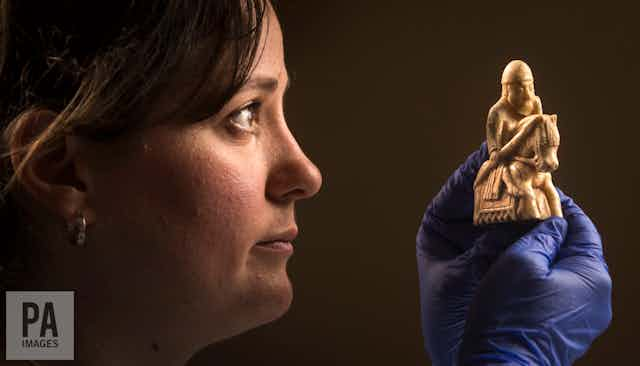Sales of ivory within the UK could soon be banned, if the government gets its way. British environment minister Michael Gove has launched a 12-week consultation exercise on a policy which, if implemented, would also ban all ivory imports and exports to the country.
There is much to celebrate about the government taking a lead on this issue. However, such bans can have unintended consequences. The US, for instance, is just over a year in to its own “near total” ivory ban after it amended its Endangered Species Act with a special rule for the African elephant. At a stroke it effectively outlawed domestic trade in elephant ivory, yet the ban has affected museums, musicians and even Arctic peoples. No wonder the US government’s own Fish and Wildlife Service needs to issue guidance on “What Can I Do With My Ivory?”. If the UK is to make its ban work, it should first look across the Atlantic for some valuable lessons.
Museums have an ethical dilemma
Museums contain lots of ivory items of historical or cultural significance, and the important role they play in public life makes the case for an exemption. I recently visited The Smithsonian in Washington DC to find out how it is dealing with the ban as its experience will be important for UK institutions with ivory items such as the British Museum, the Natural History Museum and the V&A.

The Smithsonian clearly does not condone or advocate illegal ivory trading, and its own National Museum of Natural History recently developed an excellent display on the negative effects of the ivory trade on elephants.
Yet, as the public has turned against ivory, many museums are pondering whether, or how, to display these items. The Smithsonian has established an Ivory Task Force to think through these complex challenges. Ivory pieces for example, can be an important part of displays about historical injustices that we should not forget – one obvious example is the link between the slave trade and the trade in African elephant ivory. The newest member of the Smithsonian the National Museum of African American Hisotry and Culture, has a display which specifically tackles this.
The US ban also makes it harder for museums to share their collections internationally. Museums may be reluctant to loan out their ivory where strict domestic bans are in place, as there is a risk their collection will be impounded. While US regulations allow the import and re-export of worked ivory as part of a non-commercial travelling exhibition, the ivory must be proven to be “pre-convention” – that is, removed from the wild before global laws on wildlife trade came into force in 1976. However, the reality is that museums are likely to remain concerned that their collections will be at risk if they travel to the US. The UK plans go even further, and propose a ban on all ivory, whether it is pre-convention or not.

Ivory also pops up in unlikely places, and small bits of ivory can render a much larger item illegal. For example one of the chronometers which was aboard the HMS Beagle with Charles Darwin has an ivory disk on its case. This puts it off limits for US museums – in order to import it they would have to remove the ivory and replace it with another material, such as plastic. But if the disk is replaced, can we really still claim it is the same chronometer that voyaged with Darwin? Does it retain its historical significance?
Ivory … but not elephants
The US domestic ivory ban has also hit sales of carvings in narwhal and walrus ivory, which generate income for some native Arctic communities. Dealers in Arctic arts were facing more and more questions and criticism from customers who assumed the ivory was banned, such that it became less profitable and desirable to stock and sell items made from other forms of ivory. One group in Alaska, the Iñupiat, has called for greater clarity on the law. While the market for Arctic arts and carvings is less significant in the UK than in the US, it is worth thinking about how a British ban might compound this problem.
Art and antique dealers may also suddenly find sections of their stock are illegal to sell. This also affects musicians since many instruments have parts made from ivory. Piano keys are obvious, but there are also several traditional instruments that have ivory parts, including the Japanese lute-like Shamisen, antique European violin bows, and even many bagpipes. Under the US ban, instruments with ivory parts can only enter the country if the owner can prove that the ivory was taken from the wild before 1976 and can provide the correct musical instrument permit. This is not as easy as it sounds.
The UK consultation refers to the need to develop specific and clearly defined exemptions to a domestic ivory ban. This is important. But as the global trade ban on endangered plants and animals has shown, the more exemptions there are, the more potential loopholes there are for traffickers to exploit; for instance, the trade in antique and reworked ivory has been used as a cover for illegal ivory. There are no easy answers, but learning from the US would be a very good place to start.

